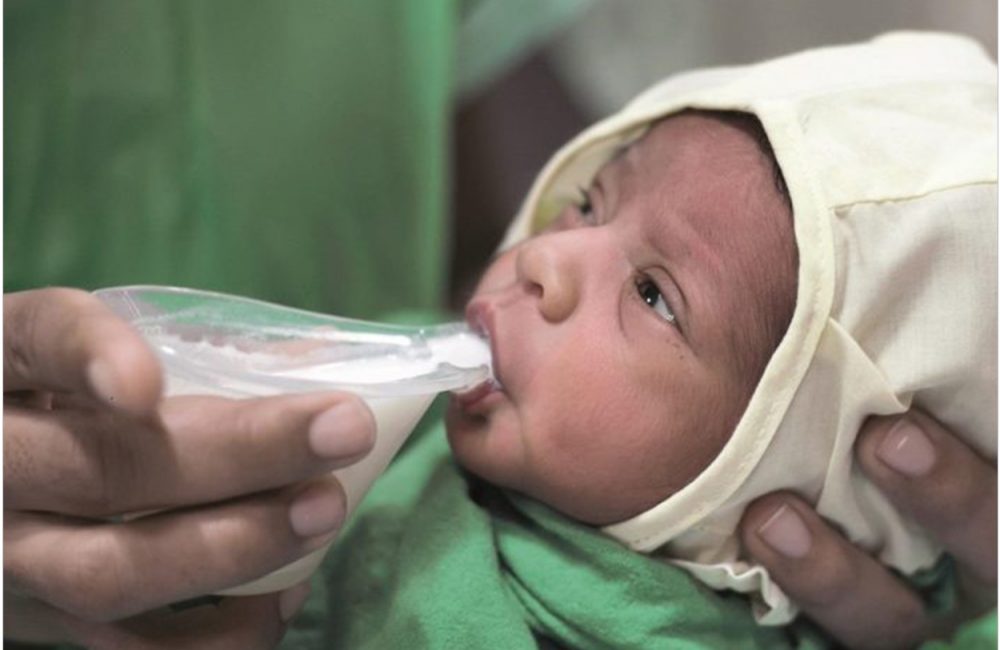
Starvation is a real threat for many infants who cannot breastfeed in the developing world. Some have physical anomalies such as cleft lip and palate that make it difficult. Others face a higher risk of starvation after being born to mothers who died from childbirth-related causes. And, premature babies have trouble mastering the suck-swallow-breathe sequence. The NIFTY cup, however, may save those young lives.
Collaborators from the University of Washington, the global health nonprofit PATH, and Seattle Children’s Hospital developed the low-cost, 40-mL Neonatal Intuitive Feeding Technology (NIFTY) cup. The extended reservoir off its lip holds a small bowl of milk, so infants can pace their own feeding. Also, embossed measurements help track milk volume and intake.
Additionally, the ergonomically designed cup is made of a durable, soft silicone material that protects the infant’s mouth from injury and can be boiled for sterilization. It dries quickly and is UV-resistant as well. And, mothers can directly express their breast milk into the cup, reducing possible cross-contamination from other containers.
Once a prototype was developed, the collaborators tested it with partners at Sri Ramanchandra University in South India and used feedback to refine the design. They have since partnered with Laerdal Global Health, a Norwegian nonprofit manufacturer, to distribute the cup to hospital workers in Africa. Each cup will cost about $1.
The project also has received a $250,000 award to validate the technology from Saving Lives at Birth: A Grand Challenge for Development. This consortium includes the US Agency for International Development and the Bill & Melinda Gates Foundation.
“It’s incredibly gratifying to be nominated for this award that will help fund the crucial next step in our 5-year journey to bring this lifesaving tool to the infants who need it,” said Christy McKinney, PhD, MPH, an associate professor of craniofacial medicine at the University of Washington School of Medicine’s Department of Pediatrics and an investigator at the Seattle Children’s Research Institute.
PATH has established a donors program to help fund the NIFTY’s use. For each tax-deductible $50 donation, the group will send 10 cups to hospitals in Malawi and Tanzania. PATH will use the balance of the donation to further develop the cup and its use.
“In these settings, moms and health workers often use a metal cup and spoon, or sometimes a small cup, to pour milk into the mouth of a baby who can’t breastfeed,” said Trish Coffey, group leader for health technologies for women and children in PATH’s Devices and Tools Program. “Just a few ounces of breast milk a day can give these babies a fighting chance to live long, healthy lives.”
Related Articles
Gene Tied to Cleft Lip and Palate Development Identified
Online Resources Support Baby’s First Dental Visit
Got Fluoridated Milk? It Fights Cavities, Too














